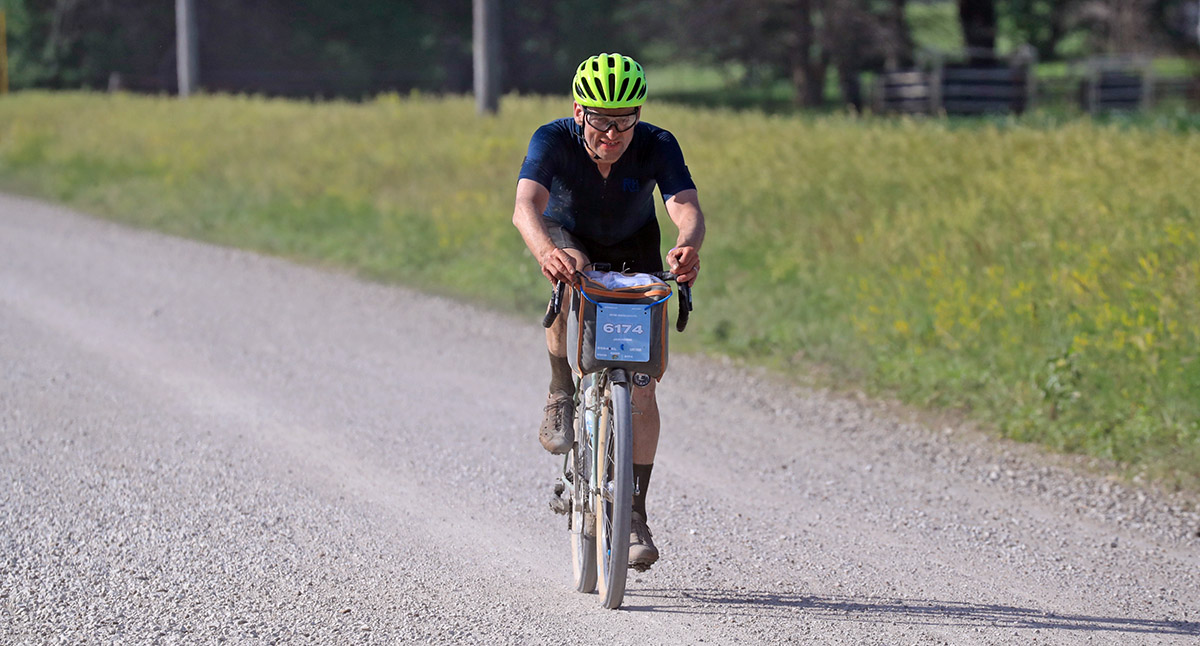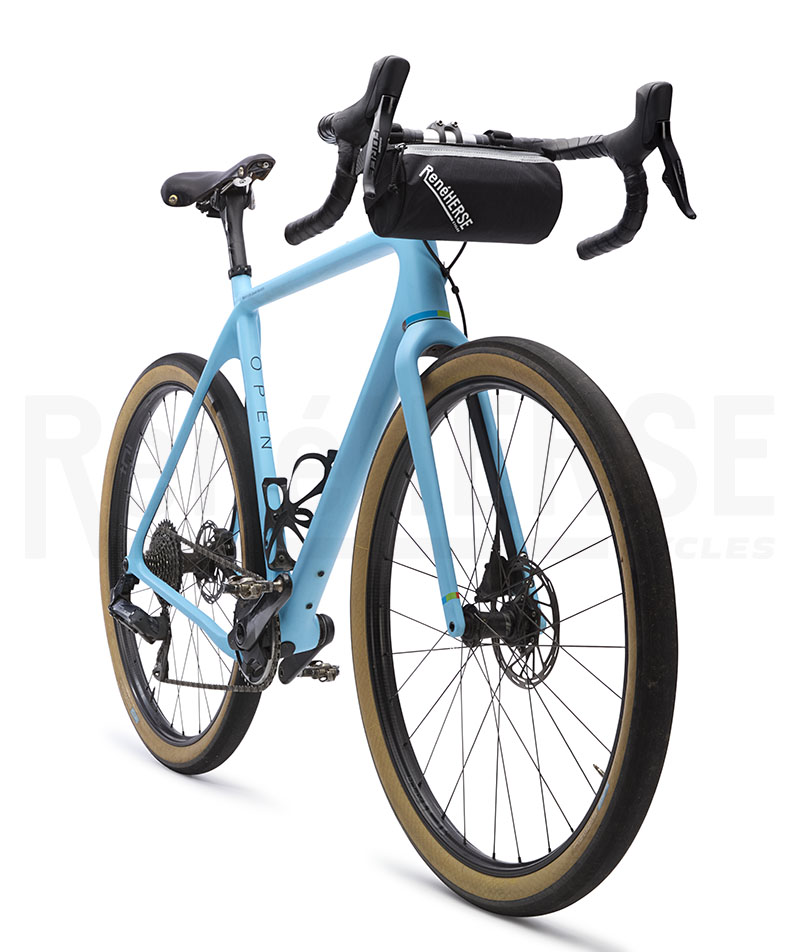A Steel Bike Lighter than Carbon?
Light weight isn’t everything, but a lighter bike is faster and more fun. There is the simple physics of climbing—less weight means more speed. More important, to me at least, is the feel of the bike when I rock it from side to side as I climb or sprint out of the saddle. I even feel the weight when I’m just rolling the bike out of the garage. And if I have to portage it, every gram takes on even greater importance.
The headline of this article might have raised some eyebrows: How can a steel bike be lighter than carbon? I’m not going to suggest that we can build a steel frame that weighs less than 880 g—the frame weight of my OPEN U.P.P.E.R. carbon bike. In fact, the lightweight feel is one reason I absolutely love my U.P.P.E.R. It’s the bike I pick most often for day rides that cover a variety of terrains.
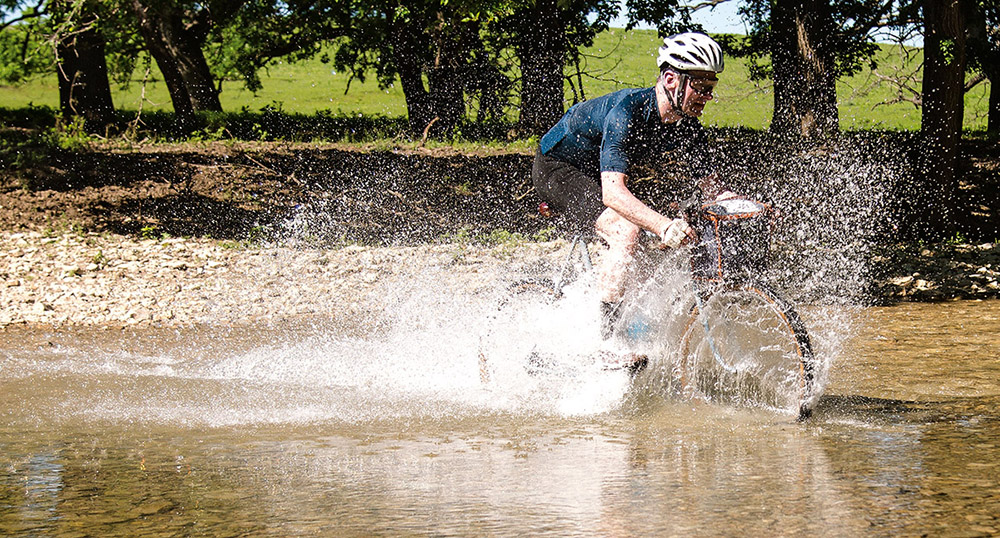
For rides and races that go non-stop for 24 hours or longer—Unbound XL, Arkansas High Country Race, Dark Divide 300 or Paris-Brest-Paris—I’m riding a steel bike. Once all the equipment needed for these ultra races is on board, my steel bike is in fact lighter than comparable carbon bikes.
How does that work? It’s how lights, luggage (and sometimes fenders) are integrated into the bike. With a carbon bike, I have to resort to heavy clamps and brackets to mount my lights. For my luggage, I’ll need multiple bikepacking bags that use a large amount of fabric for each liter of interior volume. All this adds weight.
Steel is easy to customize. That means I can create a custom-built bike that’s exactly as I want it. I can integrate all the parts necessary for these long adventures into the original design, rather than add them later as afterthoughts. That approach saves weight and improves performance as well as reliability.
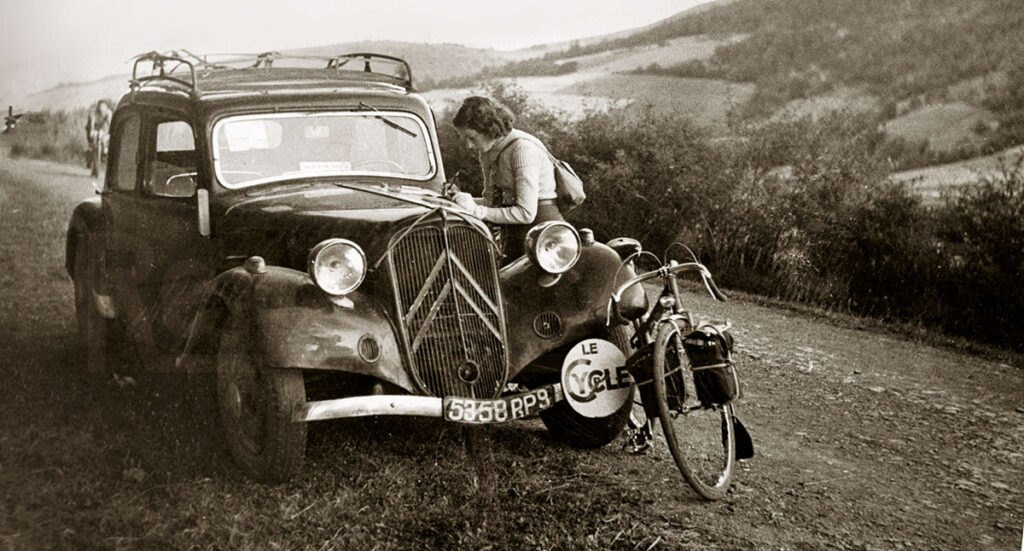
At Rene Herse Cycles, we’re building on decades of experience when it comes to making superlight steel bikes for big adventures. In 1938, René Herse introduced his ground-breaking components by building the world’s lightest bikepacking bike. Complete with wide tires, fenders, lights, a rack and even a pump, it weighed just 7.94 kg (17.5 lb). Even in today’s world, that is incredibly light.
And that bike was no show queen, but designed for rough roads and hard riding. The photo above shows René’s daughter Lyli Herse with a later version of these bikes during the famous Concours de Machines, a competition for the best bikepacking bike. To prove their durability, the bikes were ridden over 700 km of rough mountain roads at high speeds. (Lyli later won the French national championships 8 times, so she knew how to push her bike to the limit.) At the end of each stage, there was a bike check. To win this event, as René Herse did in 1947, a bike didn’t just have to be ultralight, but also completely trouble-free.
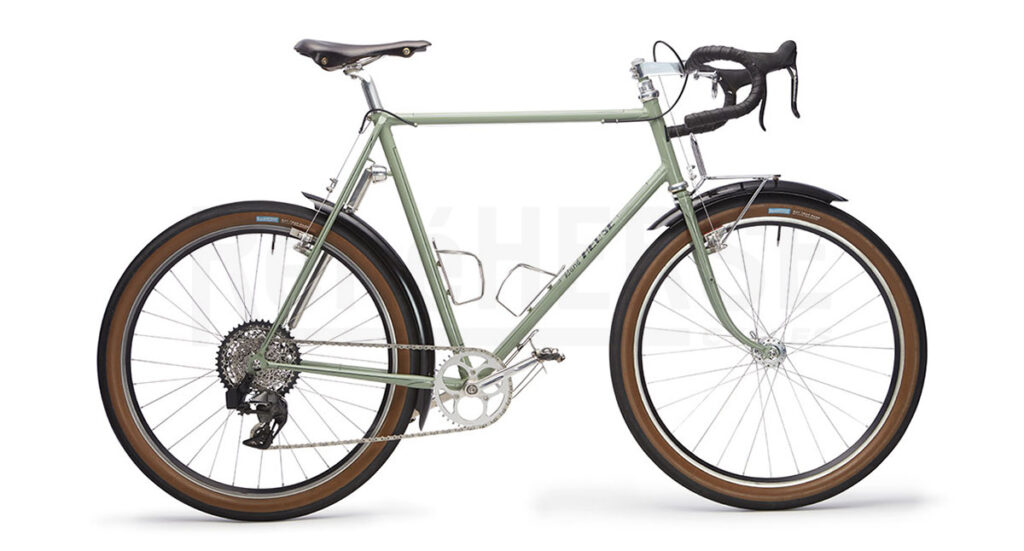
My bike for Unbound XL isn’t quite as featherweight, because I wanted to create a bike for decades of hard use. That said, 10.2 kg (22.5 lb) including lights, rack, bottle cages, pedals, pump and the aero fender fairings is lighter than most bikes that line up for the start of the 355-mile Unbound XL across the Flint Hills of Kansas.
Just for comparison, my steel bike, completely equipped, weighs the same as a top-spec Salsa Cutthroat carbon bikepacking bike without lights, pedals, bottle cages, etc.
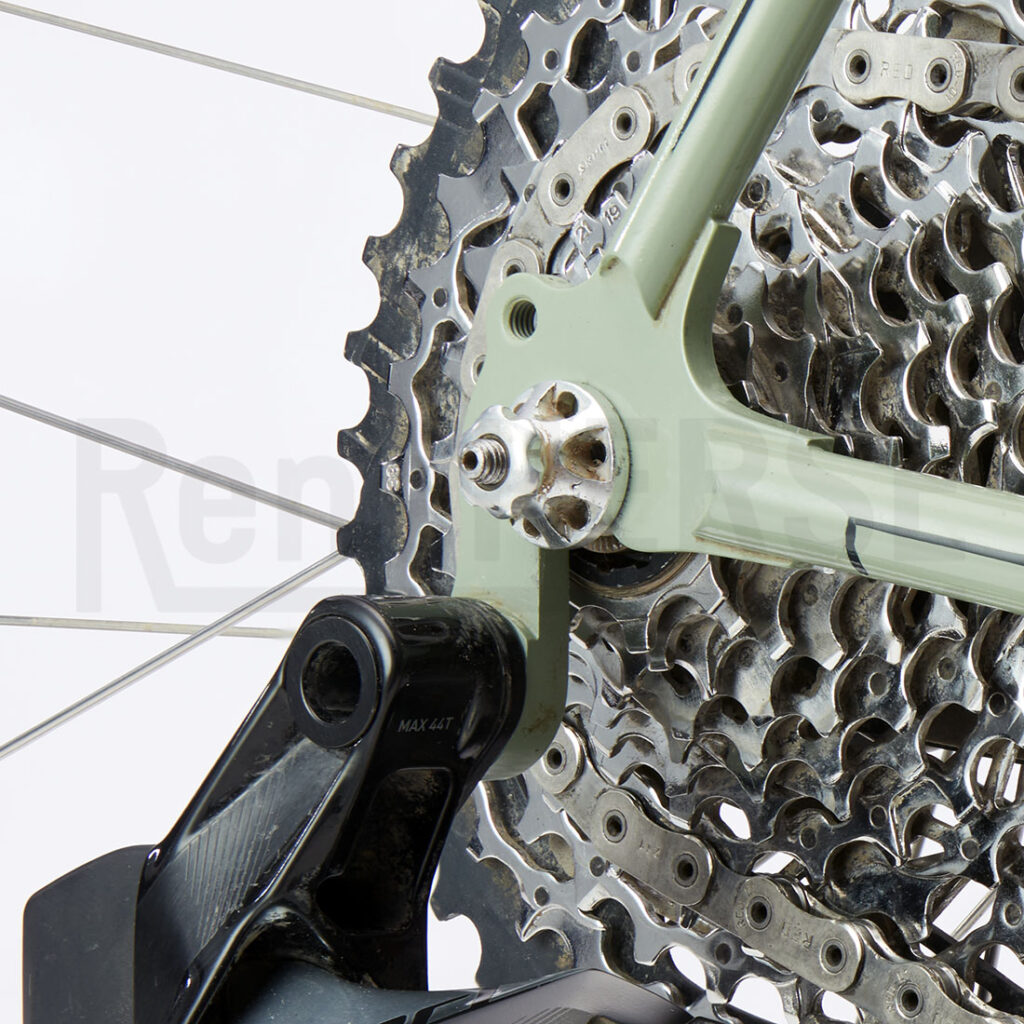
How did we manage to achieve this remarkably light weight? It starts with the Rene Herse × Kaisei frame tubes. They have ultra-thin walls—just 0.4 mm thick in the center sections. All parts of the frame have been optimized for light weight.
For example, the Rene Herse dropouts (above) are short, and the stays extend almost all the way to the axles. Tubes lighter than steel plates. They are also stiffer, making this a win-win situation. (As an aside, the derailleur hanger is optimized for modern drivetrains, unlike most steel dropouts that were designed in the days of five-speed transmissions that put much less emphasis on the exact location of the rear derailleur.)
It’s not just the dropouts: Every part of the frame is optimized for weight and performance, without compromising durability. But the frame only makes up 10% of the bike’s weight… The other 90% offer the biggest potential for savings.
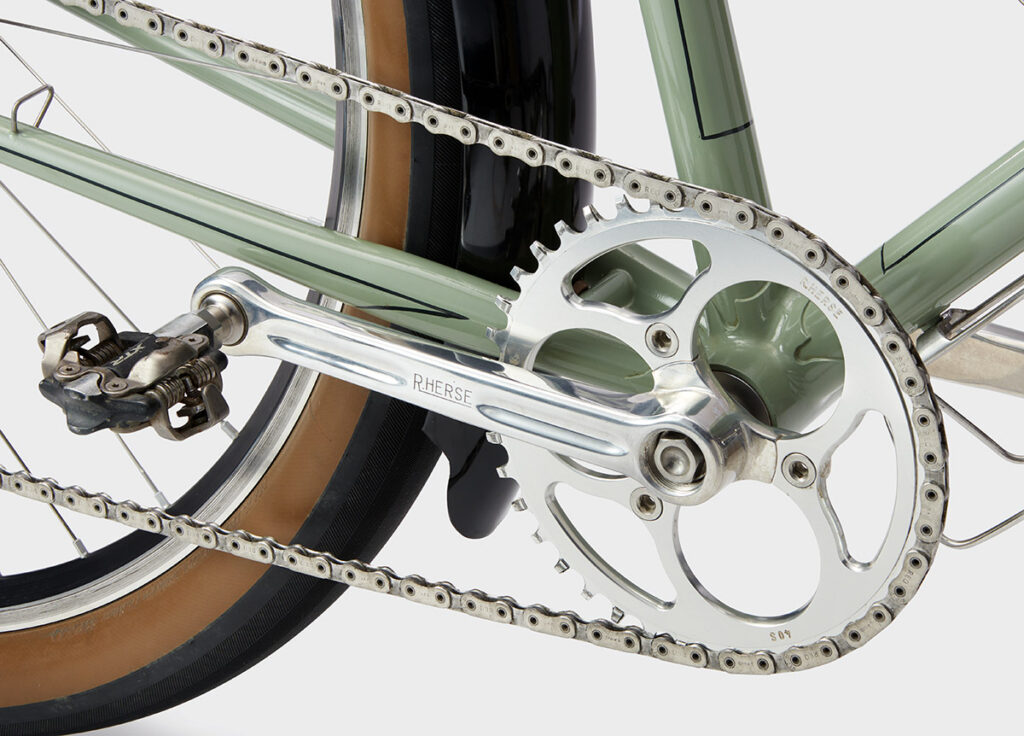
Rene Herse components have always been superlight. Smart design, top-notch materials, and superior craftsmanship allow us to push the envelope. For example, our cranks have just three spider arms, which saves significant weight compared to four or five arms—but also requires much tighter tolerances to prevent the chainrings from wobbling. Rene Herse One-By cranks weigh just 450 g (including the chainring)—far less than other aluminum cranks. The crank bolts are made from titanium—because every gram counts.
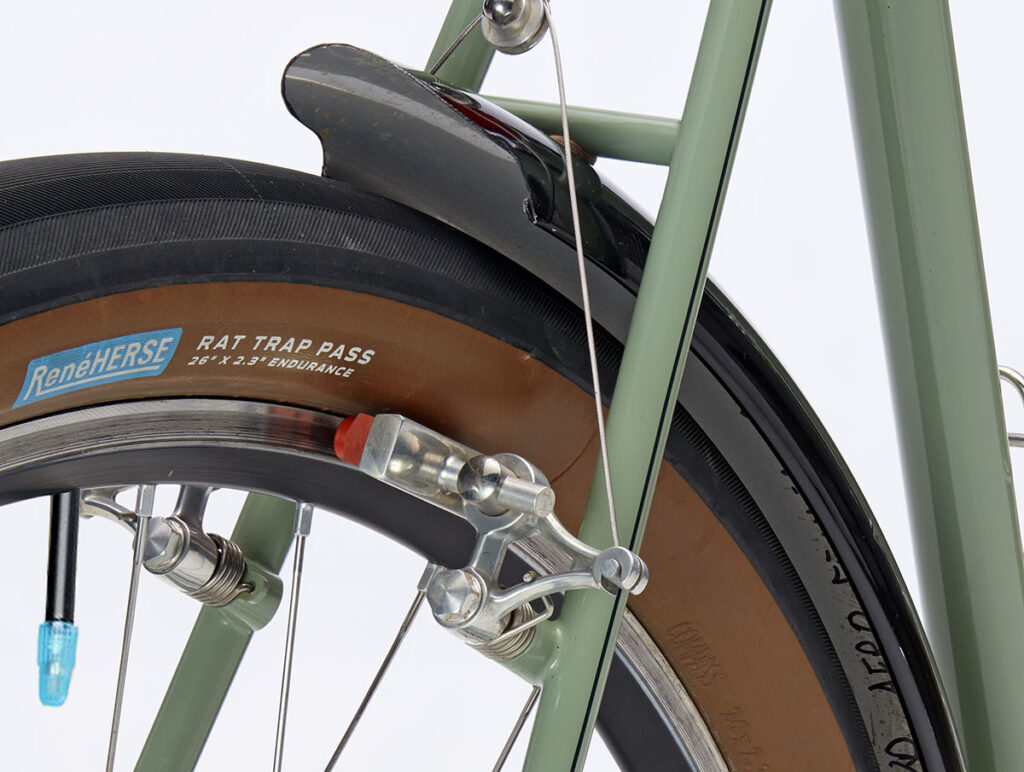
Running cantilever brakes instead of discs also saves significant weight—especially since the Rene Herse cantis are among the world’s lightest brakes. At 75 g per wheel, they are lighter than the famous eeBrakes.
What about braking performance? It’s true that many cantis don’t offer great power and modulation. With some you even get fork judder. By optimizing every aspect of our canti brakes, we’ve eliminated all these drawbacks. Even descending the rutted, steep trails of Juniper Ridge during the Dark Divide 300, I never wished for different brakes.
Lightweight components make a big difference, but that by itself isn’t enough. After all, the components of top-end carbon bikes are ultralight, too. My OPEN U.P.P.E.R. weighs just 8.5 kg (18.7 lb). The real difference comes from the equipment that I would have to add to a carbon bike for night racing and for carrying food and clothes for these long rides.
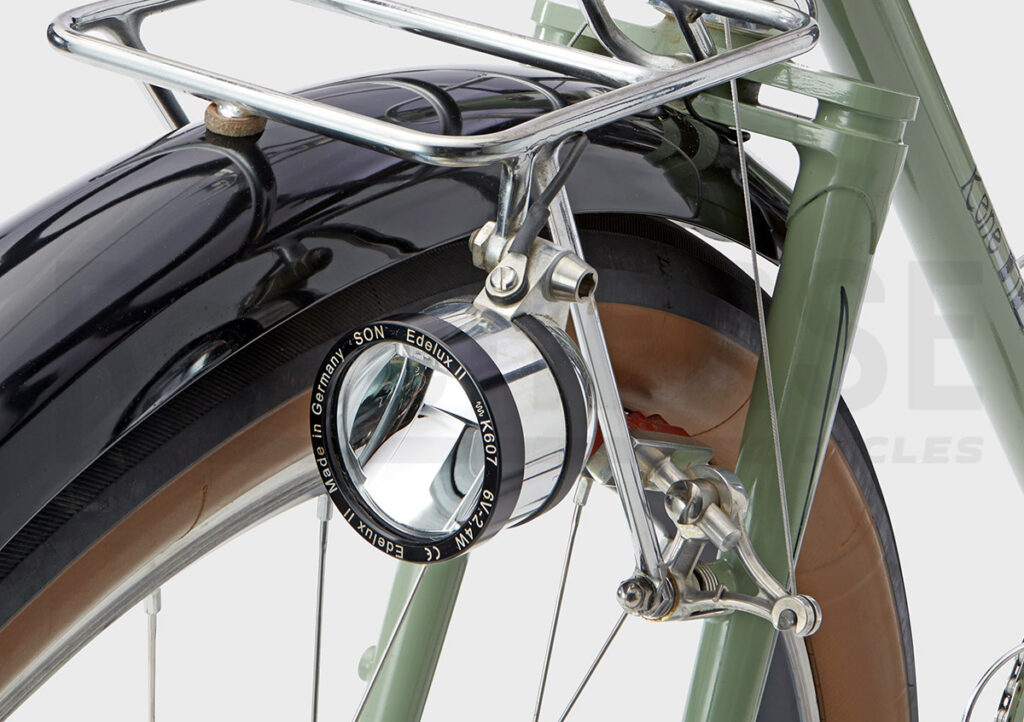
What makes my steel bike ultralight is the seamless integration of lights and luggage. Many parts serve double- or triple-duty. Take the front rack, for example: It supports the handlebar bag—which makes it possible to create an ultralight bag, since the bag doesn’t support the weight of the load.
The rack incorporates a light mount. (The light mount is designed so you can adjust the angle of the headlight on the move, yet it never rotates on its own.) The rack also provides a stable forward mounting point for fenders—which on this bike serve as aero fairings similar to those found on Moto GP motorbikes. The rack does all this, yet it weighs just 168 grams.
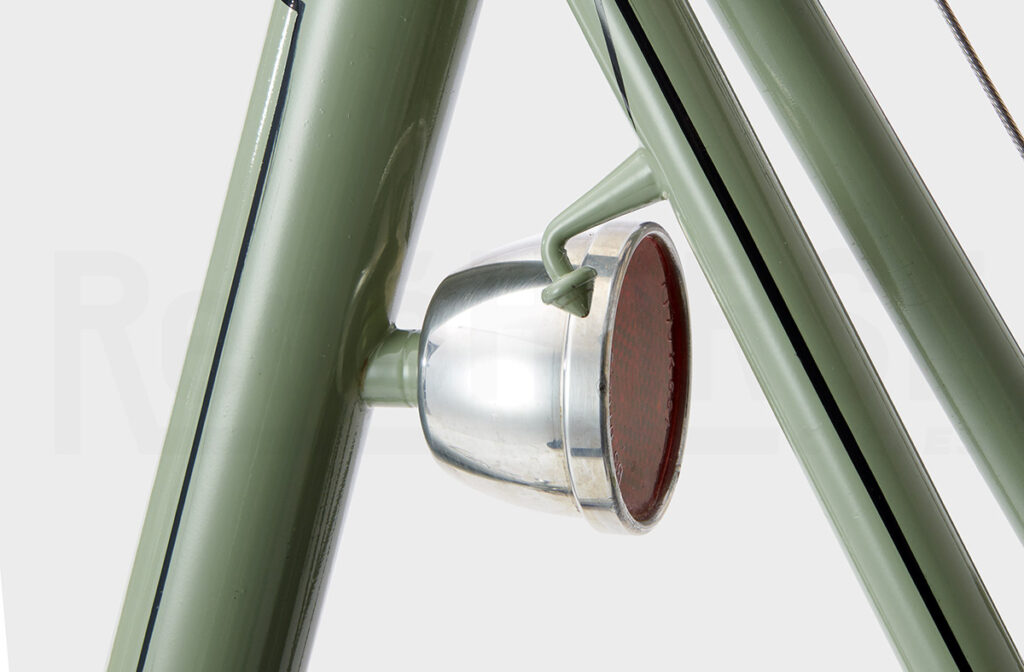
The taillight is attached directly to the frame. It’s powered by the same generator hub as the headlight, so there are no batteries that add weight. (The wires run inside the frame, where they are protected from getting snagged and broken.) Pump peg eliminate clamps and straps to attach the pump—a few more grams saved.
It may not sound like a lot, but a bolt-on light mount weighs 50 g or more. And since it’s just clamped onto the handlebars, it has a tendency to rotate when you’re riding on rough gravel.
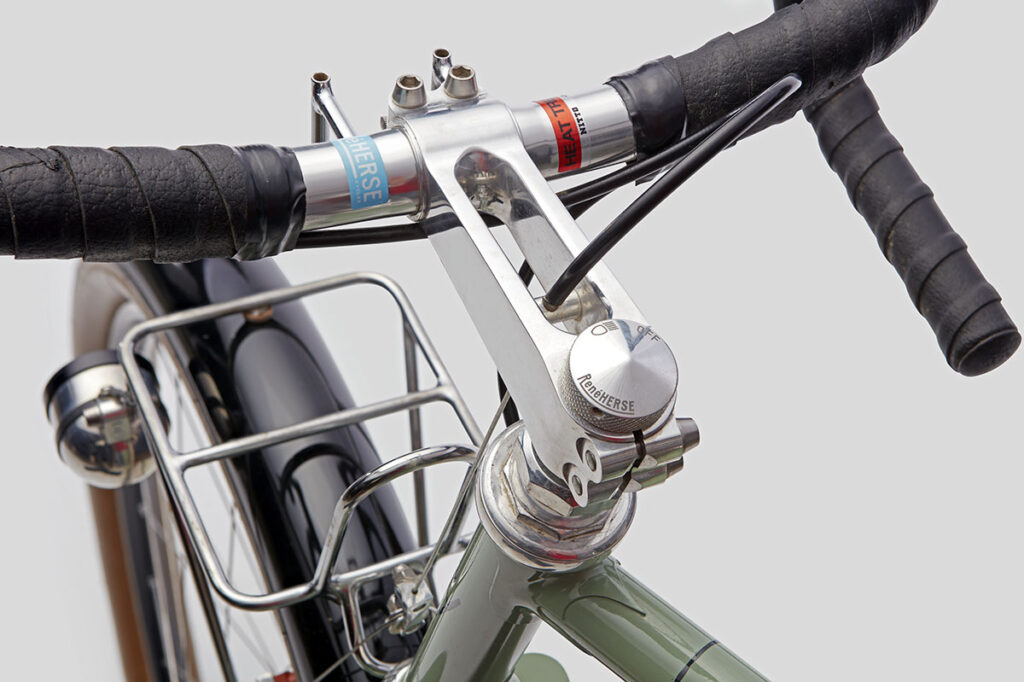
The Rene Herse stem also serves several purposes beyond holding the handlebars. It incorporates a flex-free cable hanger for additional weight savings (and improved braking). A decaleur—the little ‘rack’ that extends forward—attaches the handlebar bag securely, without obstructing the hand positions on the tops of the bars. The stem also incorporates a light switch for both head- and taillights: Just turn the stem cap, and the lights turn on. To minimize the weight, the stem bolts are custom-made from titanium. (By the way, we just received more Rene Herse stems—all sizes are in stock now, including the new 110 mm stems.)
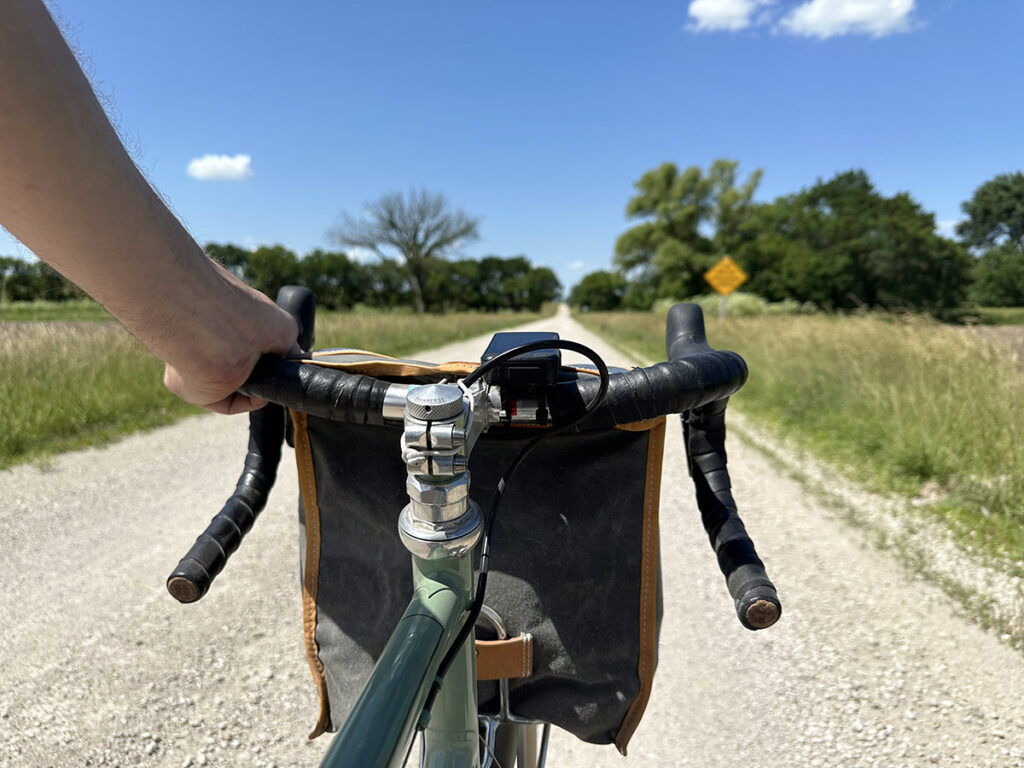
Thanks to the front rack, I run a single 11-liter handlebar bag—which weighs just 285 g—instead of multiple bags. That’s not only lighter, it also speeds up resupply stops. While other racers figure out how to distribute their supplies among multiple bags, I just put everything into the big bag and ride off.
Take together, these savings more than cancel out the lower weight of a carbon frame. That’s how my steel bike is lighter than carbon when I line up at the start of Unbound XL and similar races. The entire bike, including the bag, weighs just 10.5 kg (23.1 lb) before I add all the water, food and clothes I need for such a long ride. Having a lightweight bike that feels like a road bike, rather than a beast of burden, is something I really enjoy when I head for these adventures.
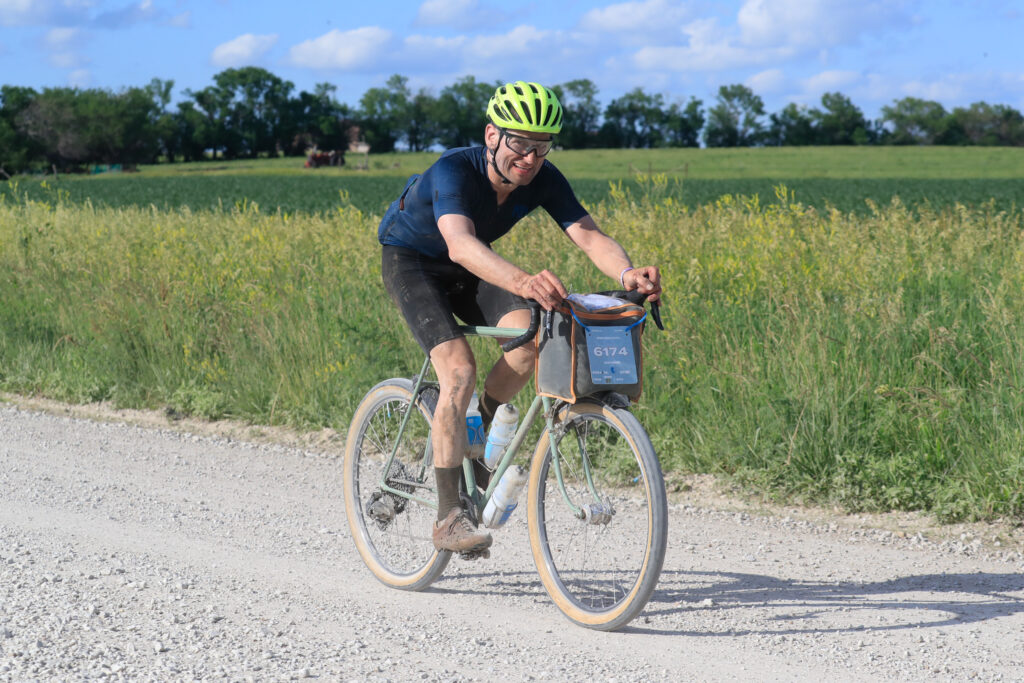
Weight isn’t everything. Comfort, speed and reliability are arguably even more important. For comfort, I’m running a leather saddle, even though it’s heavier than a lightweight plastic shell. For me, not worrying about a sore behind is worth the extra grams. The Rene Herse Randonneur handlebars are superlight—just 280 g—and provide truly ergonomic support for my hands during these long rides. The photo shows me approaching the finish of this year’s Unbound XL after 355 miles of (almost) non-stop riding. I was tired after 28 hours on the (gravel) road, but there were no aches or pains.
For speed, I choose wide, supple tires and TPU tubes—lightweight and with ultra-low rolling resistance. Fairings over the wheels reduce wind resistance: The tops of the tires move at twice the speed of the bike, so shielding them makes a noticeable difference.
As to reliability, the integrated solutions for lights and luggage not only save weight, but also eliminate clamps and brackets that have a tendency to work loose. In fact, this bike has done two Unbound XL, two Arkansas High Country Races, the Dark Divide 300, plus many adventures in the Cascade Mountains, without a single bolt coming loose. Before big events, I go over the bike and check every bolt and nut. So far, none have needed any attention.
The goal of this post is not to convince you that steel bikes are better. Great bikes can be made from many materials. Key to light weight and performance is optimizing every part. Steel has the advantage that it’s easy to customize, which makes it possible to create fully equipped ultra race bikes that are lighter than their carbon equivalents. At Rene Herse Cycles, we’ve spent more than a decade to examine and rethink every part of our steel bikes to optimize their performance in every way. For us, steel is not a ‘retro’ choice, but simply the best material to build a bike for ultra-long adventures and races.
That brings up an obvious question: Could you replicate my bike with a carbon frame to save another pound or two? You could—with a huge investment into special molds. This only makes sense if you sell thousands of frames (in each size). It’s definitely something I’ve been thinking about, and someday there may be a carbon Rene Herse ultra bike. My heart wants one—badly—even though my head knows that it wouldn’t offer a noticeable improvement in performance over my current steel bike.
To summarize, for rides that require just a ‘naked’ bike, a carbon bike is superlight and a lot of fun. For rides that require lights and luggage, a steel bike can be built to be superlight, ultra-fast and incredibly reliable. Neither is better than the other, they just serve different purposes. I love them both.
Further Reading:
- The All-Road Bike Revolution details all our research into bicycle performance.
- Aerodynamics of gravel bikes with details of the wheel-top fairings
- Specs of the Unbound XL Rene Herse bike
- Click on the images above for more information
Photo credits: Marc Arjol Rodriguez / Velophoto.tx (Photo 1); Rene Herse Archives (Photo 3); Makoto Ayano (Photo 12)


